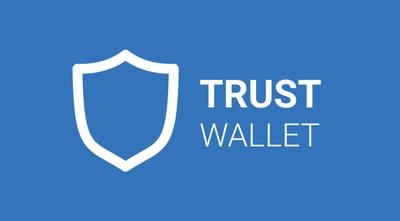Top AI Crypto Tokens to Watch in 2025: Insights & How to Invest September, 2025
AI and blockchain are converging in 2025, creating new opportunities with AI-powered tokens. This guide covers the top projects, risks, and smart investing strategies.
 Written by Nikolas Sargeant
Written by Nikolas Sargeant
| Avgifter | Insättningsalternativ | |||||||||
|---|---|---|---|---|---|---|---|---|---|---|
| Namn | Kryptos | Taker | Maker | Uttag | Banköverföring | Kreditkort | Trading API | Grundades år | Offer | |

Binance
Centralized Exchanges
|
431 | 0.10% | 0.10% | 0.0002 | 2017 |
FÅ UPP TILL USD 100 I VÄLKOMSTBONUS
|
Besök | |||

Coinbase
Centralized Exchanges
|
136 | 2.00% | 2.00% | 0.000079 | 2012 |
FÅ 5 USD I VÄLKOMSTBONUS
|
Besök | |||

Kraken
Centralized Exchanges
|
129 | 0.26% | 0.16% | 0.0002 | 2011 |
|
||||

PancakeSwap
Decentralized Exchanges
|
203 | 0.20% | 0.20% | 0.00041 | 2020 |
|
||||

Uniswap
Decentralized Exchanges
|
390 | 0.30% | 0.30% | 0.000079 | 2018 |
|
||||

SushiSwap Exchange
Decentralized Exchanges
|
79 | 0.30% | 0.30% | 0.00041 | 2020 |
|
||||
| Egenskaper | Funktioner | |||||||||
|---|---|---|---|---|---|---|---|---|---|---|
| Namn | Kryptos | Säkerhet | Anonymitet | Enkelhet | Köp & Sälj | Vouchers & Presentkort | Kryptokort | Plattformar | Användarbetyg | |
| 117 |
|
Besök | ||||||||
| 3 |
|
|||||||||
| 2 |
|
|||||||||
Artificial intelligence isn’t just a tech trend anymore — it’s the engine behind everything from creative copilots and autonomous agents to fraud detection and high-frequency research. At the same time, crypto keeps iterating on what blockchains do best: open, programmable markets and permissionless infrastructure. In 2025, these two forces are colliding in a big way. The result is a new class of AI crypto tokens powering decentralized GPU networks, data marketplaces, inference services, agent economies and more — with real utility and plenty of narrative heat.
Investors are paying attention for two reasons. First, AI has an insatiable appetite for compute and high-quality data, both of which can benefit from blockchain’s incentives and global coordination. Second, token models can bootstrap these networks early, aligning developers, node operators and users around growth. That mix of utility + incentives is why AI-themed coins often lead narratives during risk-on cycles.

But hype can outrun reality. Not every “AI” token actually does meaningful AI work, and not every whitepaper promise turns into adoption. This guide is designed to help you separate signal from noise. You’ll learn what AI crypto tokens are, how to evaluate them, which projects are worth watching in 2025, and practical ways to allocate, buy, store and manage risk.
We’ll keep things accessible, but we won’t gloss over trade-offs. You’ll see the frameworks professionals use (use case, tech, tokenomics, partnerships, traction), the risks to watch (volatility, regulation, centralization pressure) and the playbooks for investing responsibly (DCA, diversification, custody best practices).
Note: Nothing here is financial advice. Crypto assets are volatile and speculative. Always do your own research and never invest more than you can afford to lose.
What Are AI Crypto Tokens?
At their core, AI crypto tokens are digital assets that fuel platforms where artificial intelligence and blockchain intersect. They aren’t just speculative coins with “AI” slapped on the label. The legitimate ones enable decentralized systems to run machine learning workloads, exchange AI-ready data, or deploy autonomous agents that act on behalf of users.
Think of them as the “oil” for networks where AI services need coordination, incentives, and transparent rules of engagement. Just as Ethereum’s ETH pays for smart contract execution, AI tokens give participants a way to buy compute cycles, train models, or access prediction services without depending on centralized providers.

Key Categories of AI Tokens
To better understand the landscape, it helps to group AI crypto tokens into several categories:
- AI Infrastructure Tokens — These projects provide the raw resources AI requires: GPU power, memory, and distributed compute. By decentralizing access to hardware, they help solve the global shortage of compute that large models demand. Example: Render (RNDR).
- AI Service & Marketplace Tokens — These enable marketplaces where developers can upload, monetize, and share AI models. Users can pay for inference or training services directly with tokens. Example: SingularityNET (AGIX).
- AI + Data Economy Tokens — Since AI is only as good as the data it trains on, these tokens incentivize secure, transparent data sharing. They often use blockchain to ensure ownership and monetization. Example: Ocean Protocol (OCEAN).
- AI-Powered DeFi & Prediction Tools — Some projects integrate AI into trading algorithms, risk assessment, or prediction markets. Tokens here often govern platforms that use AI for smarter financial products. Example: Numerai (NMR).
- AI Agents & Application Layer Tokens — The most experimental category — projects enabling autonomous AI agents to negotiate, transact, and execute tasks on-chain. Example: Fetch.ai (FET).
- Why AI Tokens Matter in 2025 — As artificial intelligence becomes more embedded in everyday life, the demand for decentralized infrastructure that ensures trust, fairness, and ownership will grow. Centralized giants like OpenAI, Google, or Nvidia will dominate much of the industry, but crypto-native networks give individuals and smaller firms an alternative: open systems where incentives, data, and access aren’t gatekept.
In short: AI tokens are not just speculative bets. They’re building blocks for a parallel AI economy where blockchain coordinates what centralized players cannot.
Why AI + Crypto Is Exploding
The convergence of artificial intelligence and blockchain is not a coincidence. It’s the result of overlapping demand curves, where the limitations of centralized AI infrastructure collide with the strengths of decentralized networks. In 2025, several factors are driving the rapid growth of AI crypto tokens:
1. The Surge in AI Adoption
The rise of large language models, generative AI, and autonomous agents has created a global appetite for compute power and data. Enterprises and startups alike are experimenting with AI-driven services, from logistics optimization to creative copilots. This surge translates into a massive need for decentralized resources — exactly what tokenized networks can supply.

2. GPU Shortages and Compute Bottlenecks
AI development depends on powerful GPUs and high-performance clusters. In recent years, shortages have made it difficult for smaller firms to compete with tech giants. Decentralized GPU marketplaces, powered by tokens like Render (RNDR) or Bittensor (TAO), aim to unlock idle hardware and reward contributors, reducing dependency on a handful of centralized providers.
3. Decentralized Data Markets
AI models live or die by the quality of their training data. Traditional data pipelines are opaque and often riddled with ownership disputes. Tokenized networks like Ocean Protocol (OCEAN) enable transparent data sharing where contributors are rewarded, and consumers can verify provenance. This aligns incentives and broadens access to high-quality datasets.
4. Investor Appetite for the AI Narrative
Every crypto cycle has its narrative: DeFi in 2020, NFTs in 2021, Metaverse in 2022. In 2025, AI is that narrative. Investors are not just chasing hype — they recognize that AI represents a multi-trillion-dollar industry, and crypto-native projects have a chance to capture a slice of that pie. Tokens tied to real compute or data services stand out as particularly compelling.
But caution is warranted. Not all projects labeled “AI” have substance. Many are simply attaching buzzwords to attract speculative capital. The explosion is real, but so are the risks of overhyped promises.
How to Evaluate AI Crypto Projects
With dozens of “AI coins” popping up on exchanges, it can be hard to separate genuinely promising projects from opportunistic cash grabs. The key is to use a clear evaluation framework before allocating capital. Here are the factors savvy investors and analysts consider when assessing AI crypto tokens:
1. Use Case & Real-World Problem
Ask: What problem does this token solve?
- Does it provide decentralized GPU power (Render, Bittensor)?
- Does it enable AI service marketplaces (SingularityNET)?
- Does it solve data access and ownership issues (Ocean Protocol)?
Tokens with a tangible use case beyond speculation are far more likely to endure.

2. Technology & Integration
AI + blockchain is technically complex. Evaluate:
- Is the project’s architecture scalable?
- Are the AI and blockchain components genuinely integrated, or just loosely connected?
- Are they solving a technical bottleneck (like training, inference, or data verification)?
Whitepapers should demonstrate credible technical depth, not just buzzwords.
3. Team & Partnerships
Strong AI projects often feature founders with backgrounds in machine learning, data science, or distributed systems. Look for:
- Academic affiliations (universities, AI labs).
- Corporate partnerships (cloud providers, AI startups, research institutes).
- VC or grant funding.
A well-connected team can accelerate adoption and credibility.
4. Tokenomics
Tokens must have clear utility:
- Are they required to access compute, data, or services?
- Is supply capped, or inflationary?
- Are there staking or governance mechanisms?
Beware of projects where the token has no function beyond speculation — these are vulnerable to collapse once hype fades.
5. Community & Adoption
Healthy ecosystems thrive on users and developers. Indicators include:
- Active GitHub repositories and frequent commits.
- Engaged communities on Discord, Telegram, or Twitter/X.
- Developer grants, hackathons, and ecosystem growth.
Community traction is often a better signal of staying power than price action.
Red Flags
- Anonymous teams with no track record.
- Low liquidity or tiny exchange listings.
- Overly vague “AI” marketing with no technical detail.
- Promises of guaranteed returns (a hallmark of scams).
By applying this checklist, investors can cut through the hype and focus on AI crypto projects with substance — the ones most likely to deliver long-term value.

Top AI Crypto Tokens to Watch in 2025
While dozens of projects market themselves as “AI-driven,” only a handful combine strong fundamentals, active communities, and real-world utility. Below are some of the most notable AI crypto tokens gaining traction in 2025, drawn from industry watchlists (CCN.com, Tangem Wallet, DappRadar) and broader market analysis.
1. Render (RNDR)
Render is one of the most established AI-related tokens. It powers a decentralized GPU network where creators and developers can rent out GPU capacity for rendering, 3D graphics, and AI workloads. In a world where GPUs are scarce and centralized providers like Nvidia dominate, Render offers an alternative: a token-incentivized marketplace for compute.
Why it matters: AI training and inference are GPU-hungry. Render decentralizes access, unlocking idle hardware for use cases ranging from animation to neural network training. Its partnerships with media studios and AI startups add legitimacy.
Risks: Render must compete with centralized cloud giants offering convenience and integration. Scaling demand beyond niche use cases is the challenge for 2025.
2. Fetch.ai (FET)
Fetch.ai focuses on building autonomous economic agents — AI-driven bots that can negotiate, transact, and optimize services without human oversight. These agents use the blockchain for coordination, and the FET token powers transactions within this ecosystem.
Why it matters: In logistics, mobility, and DeFi, autonomous agents can streamline processes, cutting costs and reducing inefficiency. Fetch.ai has positioned itself as the infrastructure for this “agent economy,” with multiple pilots in transport and IoT.
Risks: The autonomous agent use case is still experimental, with limited adoption so far. Success hinges on practical integrations and developer buy-in.
3. SingularityNET (AGIX)
SingularityNET is a decentralized marketplace for AI services. Developers can upload machine learning models, while users pay in AGIX tokens to access them. It aims to democratize AI by breaking down silos and creating an open economy of algorithms.
Why it matters: In an era dominated by closed AI platforms (OpenAI, Google), SingularityNET’s vision of an open AI marketplace is compelling. The team, led by AI pioneer Ben Goertzel, has been active in research and ecosystem expansion.
Risks: Network effects are critical. Without enough high-quality services, the marketplace risks being underused. Competition from centralized AI platforms remains strong.

4. Ocean Protocol (OCEAN)
Ocean Protocol is designed to enable decentralized data markets, where individuals and organizations can monetize and share datasets securely. Since AI development depends on large, high-quality datasets, Ocean’s model aligns blockchain incentives with AI’s hunger for data.
Why it matters: Data ownership and provenance are hot topics. Ocean gives contributors the ability to tokenize datasets, control access, and earn rewards. For AI, this creates a more transparent and equitable supply chain of training data.
Risks: The challenge lies in adoption. Convincing enterprises to share valuable datasets on-chain is not easy, and competitors in Web2 data marketplaces are already entrenched.
5. Numerai (NMR)
Numerai is a hedge fund that leverages AI and crowdsourced data science models to make trading decisions. Data scientists stake NMR tokens to submit predictive models, which are then combined into a meta-model for market strategies. Good models earn rewards, while poor models lose staked tokens.
Why it matters: Numerai bridges AI, crypto, and finance in a unique way. Its tokenized incentive system ensures data scientists are aligned with the platform’s success. For investors, NMR represents exposure to a working model of AI-driven financial predictions.
Risks: Performance depends heavily on the accuracy of submitted models and the stability of crypto-hedge fund economics. Its niche appeal may limit mainstream adoption.
6. Covalent (CQT)
Covalent positions itself as the “Google of blockchain data.” It indexes and organizes on-chain information across multiple blockchains, providing structured datasets for developers, analysts, and AI systems. The CQT token is used for staking, query payments, and governance.
Why it matters: AI thrives on clean, structured data. Covalent simplifies access to blockchain data, enabling developers to integrate it into machine learning pipelines. With AI models increasingly analyzing on-chain behavior (DeFi patterns, NFT activity, trading anomalies), Covalent’s infrastructure is well-placed to benefit.
Risks: The project competes with other data indexers like The Graph (GRT). Differentiating on quality, cost, and developer adoption will be key.
7. Bittensor (TAO)
Bittensor is one of the most ambitious AI crypto projects. It creates a decentralized neural network, where machine learning models contribute to a global knowledge base. Contributors are rewarded in TAO tokens when their models add value to the network.
Why it matters: This approach decentralizes AI training itself — not just the data or compute. If successful, Bittensor could evolve into an open alternative to centralized AI labs, rewarding contributors for sharing models and compute resources. The project has already drawn attention from both researchers and investors in 2024–2025.
Risks: Coordinating and incentivizing high-quality contributions is complex. There’s a risk of spammy or low-value models overwhelming the system if incentives aren’t carefully balanced.

8. Velas (VLX)
Velas is a high-performance blockchain claiming to integrate AI optimizations into its consensus and transaction processes. Its AI modules are designed to fine-tune network operations, maximize throughput, and reduce inefficiencies.
Why it matters: While Velas is not an AI platform in itself, its approach shows how AI can optimize blockchain performance. For investors, it represents a bet on a hybrid chain that could attract dApps needing both scalability and AI-enhanced features.
Risks: Velas operates in a crowded field of “fast L1s.” Competing with Solana, Avalanche, and emerging AI-optimized chains is a steep challenge. Adoption remains limited compared to bigger players.
9. Gensyn / dKube.ai (Emerging AI Compute Networks)
Both Gensyn and dKube.ai represent a newer wave of projects focusing on decentralized machine learning infrastructure. The idea is to create token-incentivized networks where anyone can contribute compute resources for training AI models.
Why it matters: Training AI models is expensive and resource-intensive. By distributing workloads across a global pool of contributors, these networks could lower costs and democratize access. This is especially relevant for smaller firms priced out of centralized AI cloud services.
Risks: These projects are still early-stage, with limited live deployments. They face the classic “chicken and egg” problem: without demand, supply doesn’t scale — and vice versa.
10. New & Trending Pick (2025 Spotlight: AIOZ Network)
One of the newer names on 2025 watchlists is AIOZ Network, a decentralized edge-computing platform integrating AI-powered video streaming, storage, and content delivery. The AIOZ token fuels payments and incentivizes bandwidth contributions.
Why it matters: AI is increasingly being embedded into media delivery (compression, recommendation, real-time processing). AIOZ positions itself at the intersection of AI and Web3 streaming, making it an intriguing play in a niche but growing sector.
Risks: Competing with centralized CDNs like Akamai and Cloudflare is daunting. AIOZ must prove its network can deliver performance at scale.
Putting It All Together
The AI crypto sector is diverse. Some projects focus on raw infrastructure (Render, Bittensor, Gensyn). Others are building marketplaces and data economies (SingularityNET, Ocean, Covalent). A few, like Numerai or AIOZ, carve out vertical niches in finance and media.
For investors, the best strategy is not to treat these tokens as interchangeable “AI bets.” Each has its own risk profile, adoption curve, and target market. Diversifying across categories — compute, data, marketplaces, application-layer projects — is a way to gain exposure without overcommitting to one narrative.

How to Invest in AI Crypto Tokens
The AI crypto sector is exciting, but without a clear investment approach, it’s easy to get swept up in hype. Whether you’re a newcomer or a seasoned crypto trader, having a framework for where to buy, how to store, and what strategies to use is crucial.
Where to Buy AI Tokens
Centralized Exchanges (CEXs):
Most of the major AI tokens — like Render (RNDR), Fetch.ai (FET), and SingularityNET (AGIX) — are listed on big exchanges such as Binance, Coinbase, and Kraken. These platforms provide the deepest liquidity and user-friendly interfaces, making them ideal starting points.
Decentralized Exchanges (DEXs):
For emerging projects or tokens not yet listed on large platforms, Uniswap, PancakeSwap, and SushiSwap are common options. These require you to connect a crypto wallet and often pay gas fees, but they provide access to early-stage opportunities.
Tip: Always confirm that you’re trading the legitimate token contract address. Scammers often launch “fake” tokens with similar names.
Storing Tokens Securely
Buying is only half the battle. Safe storage is essential.
- Hardware Wallets: Devices like Ledger, Trezor, and Tangem keep your private keys offline. This is the gold standard for long-term investors.
- Software Wallets: Apps like MetaMask, Trust Wallet, or Coinbase Wallet are convenient for active traders but more vulnerable to phishing or hacks.
- Avoid Exchange Storage: Leaving funds on an exchange long-term exposes you to counterparty risk — if the exchange is hacked or freezes withdrawals, your tokens could be gone.
Rule of thumb: “Not your keys, not your crypto.”

Investment Strategies
- Dollar-Cost Averaging (DCA):
Investing a fixed amount at regular intervals (e.g., weekly or monthly) helps smooth out volatility. This strategy is especially useful in speculative niches like AI crypto. - Diversification:
AI tokens vary widely — from compute (RNDR, TAO) to data (OCEAN, CQT) to marketplaces (AGIX). Spreading investments across categories reduces reliance on one narrative. - Long-Term Holding vs. Short-Term Trading: Long-term holders may focus on blue-chip AI tokens with proven adoption. Short-term traders may look to capitalize on momentum and hype cycles.
- Portfolio Allocation:
Most analysts recommend limiting high-risk sectors like AI crypto to 5–10% of your overall portfolio. This allows upside exposure without catastrophic downside.
Risk Management
- Volatility: AI tokens can swing 30–50% in a matter of days. Use position sizing and avoid over-leverage.
- Regulation: Both AI and crypto are under global scrutiny. New laws could impact token economics.
- Liquidity: Some tokens trade on small exchanges with thin liquidity. Enter and exit positions cautiously.
- Hype Traps: Avoid chasing parabolic pumps. If a token has already risen 500% in a week, chances are you’re late.
Practical Example: A Simple Approach
Let’s say you want to invest $2,000 in AI crypto:
- $1,000 → Established plays like Render (RNDR) and SingularityNET (AGIX).
- $600 → Mid-caps like Ocean Protocol (OCEAN) and Fetch.ai (FET).
- $400 → Higher-risk emerging projects like Bittensor (TAO) or AIOZ.
You split this over four months via DCA, store most in a hardware wallet, and keep 10–15% liquid for trading opportunities. This way, you balance exposure with caution.
Bottom line: The best AI crypto investors treat this sector as a high-risk, high-reward niche. By choosing reliable exchanges, using secure wallets, diversifying, and managing risk, you are more likely to benefit if the AI + blockchain narrative delivers.

Risks & Challenges
AI crypto is one of the most exciting niches in 2025, but it comes with serious risks. Before investing, it’s worth keeping these challenges in mind:
Hype Cycles
Every cycle brings a narrative that pumps fast and crashes hard. AI tokens can soar on buzz, then retrace by 70% or more once attention fades. Timing matters.
Technical Complexity
Marrying blockchain with AI isn’t simple. Many projects overpromise, but few deliver fully functional products. Investors should be skeptical of projects with flashy branding but no working code or adoption.
Regulatory Uncertainty
Governments are actively drafting rules for both AI (ethics, data privacy) and crypto (securities law, AML/KYC). A project could face compliance issues from either side, making it riskier than traditional tokens.
Centralized Competition
OpenAI, Google, Microsoft, and Nvidia control much of the AI talent and hardware. Decentralized platforms may struggle to compete on performance or scale, especially in high-demand areas like model training.
Liquidity & Security Risks
Smaller AI tokens can be thinly traded, making it hard to buy or sell without moving the price. On top of that, smart contract exploits and rug pulls remain a threat, particularly for newer projects.
In short: AI crypto offers opportunity, but it’s a high-risk sector where failures may outnumber successes. Treat investments accordingly — with caution, discipline, and an eye for fundamentals.

Future Outlook & Conclusion
The marriage of AI and blockchain is still in its early chapters, but momentum is clear. Over the next few years, we’re likely to see:
- Decentralized GPU networks scaling to meet global demand for compute.
- On-chain AI agents negotiating trades, supply chain logistics, and even governance decisions.
- Data marketplaces where contributors retain ownership and earn tokens for sharing.
- Institutional entry, as hedge funds and enterprises use AI-powered blockchain analytics.
Not all projects will succeed. Many AI-labeled tokens will fade as quickly as they appeared. But the strongest players — those with clear use cases, solid teams, and real adoption — could become pillars of a new digital economy where compute, data, and intelligence flow openly.
For investors, the key is balance. AI tokens are speculative and volatile, yet they also represent exposure to one of the most powerful trends of the decade. The smart approach is to treat them as a high-risk slice of a broader portfolio, managed with care rather than hype-driven bets.
Takeaway: AI crypto isn’t a guaranteed gold rush, but it’s a sector worth serious attention in 2025. By evaluating projects carefully, diversifying exposure, and practicing sound risk management, investors can position themselves to benefit if the AI + blockchain narrative fulfills its potential.
Disclaimer: This content is for informational purposes only and should not be taken as financial advice. Always do your own research and consult a professional before investing.
| Avgifter | Insättningsalternativ | |||||||||
|---|---|---|---|---|---|---|---|---|---|---|
| Namn | Kryptos | Taker | Maker | Uttag | Banköverföring | Kreditkort | Trading API | Grundades år | Offer | |

Binance
Centralized Exchanges
|
431 | 0.10% | 0.10% | 0.0002 | 2017 |
FÅ UPP TILL USD 100 I VÄLKOMSTBONUS
|
Besök | |||

Coinbase
Centralized Exchanges
|
136 | 2.00% | 2.00% | 0.000079 | 2012 |
FÅ 5 USD I VÄLKOMSTBONUS
|
Besök | |||

Kraken
Centralized Exchanges
|
129 | 0.26% | 0.16% | 0.0002 | 2011 |
|
||||

PancakeSwap
Decentralized Exchanges
|
203 | 0.20% | 0.20% | 0.00041 | 2020 |
|
||||

Uniswap
Decentralized Exchanges
|
390 | 0.30% | 0.30% | 0.000079 | 2018 |
|
||||

SushiSwap Exchange
Decentralized Exchanges
|
79 | 0.30% | 0.30% | 0.00041 | 2020 |
|
||||
| Egenskaper | Funktioner | |||||||||
|---|---|---|---|---|---|---|---|---|---|---|
| Namn | Kryptos | Säkerhet | Anonymitet | Enkelhet | Köp & Sälj | Vouchers & Presentkort | Kryptokort | Plattformar | Användarbetyg | |
| 117 |
|
Besök | ||||||||
| 3 |
|
|||||||||
| 2 |
|
|||||||||



